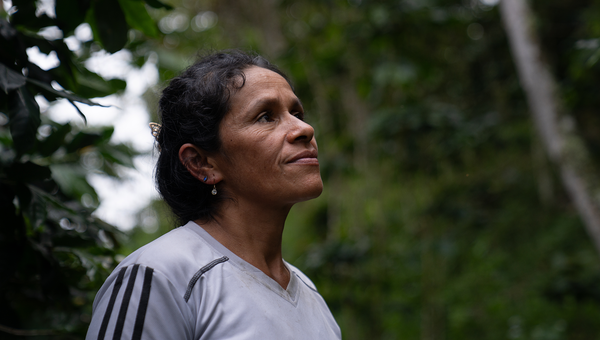
Landscapes: Ghana
Northern Savannah Zone
Ghana Shea Landscape Emission Reductions Project (GSLERP)
The forest ecosystems of Ghana’s Northern Savannah Zone (NSZ), an area of 9.7 million hectares with a population of over 5 million people, is characterized by nearly 400 million shea and other trees growing naturally on traditional farming systems. The trees are integrated with crops on smallholder farms, creating an agroforestry landscape resilient to climate change. However, these lands are facing a great threat with total forest cover having declined by over 77% between 2001-2015. This is due to the conversion of woodlands to grasslands, croplands and degraded forests.
The loss and degradation of woodlands and forests including valuable trees like shea and other species pose significant environmental, social and economic risks in this landscape, which constitutes the area of the country that records the lowest development indicators on average. Shea landscapes are important sources of carbon storage and sequestration. Shea grows naturally, is adaptable to a broad range of environmental conditions and provides essential products and ecological services to this dry region.
The Ghana Forestry Commission works with UNDP in this landscape to reduce deforestation and forest degradation while improving livelihoods and boosting the shea value chain. In particular, this work to firstly restore 200,000 hectares of off-reserve savanna forests and place under self-financing community management for the production of wood fuel, saw timber and non-timber forest products. Secondly, it aims to restore 100,000 hectares of degraded shea parklands, together with the Global Shea Alliance (GSA), by promoting public private partnerships between the upstream shea value chain producers and the downstream private sector companies who are willing to invest in measures needed to ensure their future supplies of raw materials. Together with our partners, UNDP seeks to establish 25,500 hectares of forest plantations in severely degraded forest reserves through a collaboration between the Forestry Commission and local farmers. Lastly, UNDP supports the implementation framework for the REDD+ mechanism in Ghana to ensure compliance with the United Nations Framework Convention on Climate Change guidelines.
Cocoa Region
Environmentally Sustainable Production Practices in Cocoa Landscapes (ESP I, II, III)
Cocoa plays a key role in the Ghanaian economy employing about 800,000 smallholder farmers and constituting the second largest export out of Ghana. Increase in cocoa production has been largely attributed to farm expansions and to a lesser extent to access to improved and high yielding seeds and farm inputs. Cocoa production is carried out in two main agro-ecological zones: in the moist semi-deciduous forest (i.e. Eastern, Ashanti, Brong-Ahafo, and Central Regions) and high rainforest (i.e. Western Region) with an estimated cultivation area of over 1.6 million hectare.
A baseline study conducted on environment in the cocoa sector in 2011 showed that cocoa production has intensified over the last three decades at the expense of forest losses due to the promotion of zero shade systems and movements of the timber sector. A significant consequence of deforestation, which has significantly affected cocoa production, is the loss of major soil nutrients, which is now a leading cause of the gradual decline of national cocoa yields.
Since 2013, UNDP and the Ghana Cocoa Board (COCOBOD) have implemented the “Environment” pillar (now the pilar on Conserved and Restored Forests), of the Mondelēz International Cocoa Life Ghana program, which aims to empower cocoa farmers, cocoa communities and cocoa institutions as the essential foundation for an environmentally friendly cocoa value chain to sustain the productivity and competitiveness of the cocoa industry globally. UNDP through collaboration with the Ghana Cocoa Board (COCOBOD), supported cocoa farmers and cocoa-growing communities in Ghana’s cocoa value chain to adopt environmentally sustainable production practices in the farms, to increase their yields and householdincome, conserving ecosystems and biodiversity, as well as building resilient cocoa institutions and tools to support the sustainable growth of the cocoa value chain:
- Over 100,000 hectares of degraded landscapes in off-reserve areas restored through plantations development, community forestry, and natural regeneration;
- 64,377 farmers trained on the multiple benefits of enhancing tree and carbon stocks and good environmental practises on cocoa farms;
- Establishment of two Community Resource Management Area (CREMA) in Asuanfo North (Ayum-Asuokow CREMA) and in Atobiase (Pra-Subri CREMA). CREMAs involve a group of communities agreeing on the management regime of a common area. It works based with an executive structure, a constitution and relevant bye-laws that guide and regulate natural resource governance and management activities in the respective constituent communities. Usually the CREMAs link a number of Protected Areas and Forest Reserves and create an ecological corridor for both fora and fauna. Also, the CREMA mechanism creates incentives for farmers by allowing them to benefit from the use of natural resources which in turn encourages them to manage these resources sustainably. Other benefits of CREMAs include improved livelihoods and human wellbeing.
- 29 communities in Wassa East district were supported to protect and sustainably manage natural assets in the Pra-Subri CREMA.
- 170ha of MTS1 initiated, as at December 2020.
UNDP continues its work towards sustainable cocoa production in the country with the launch of the Green Commodities Programme phase III, supported by the Swiss State Secretariat for Economic Affairs (SECO). You can read more about the project here.
For more information about our work in Ghana, please contact Melissa Salazar at melissa.salazar@undp.org.
1 Modified Taungya System aims to restore heavily degraded land by replanting it with economic trees in a plantation model.

 Locations
Locations




